Mosaics of the former USSR – the iconic works of art that are part of Soviet cultural heritage
We’ve always admired Soviet-era mosaics when we come across them in the past but, lately, and in particular in Moldova and the breakaway de facto state of Pridnestrovie (Transnistria), we’ve actively gone out of our way to locate these colourful vestiges of a bygone era.
They are disappearing fast and I wished we’d paid closer attention to them years back when we initially started travelling in the region. When compiling the photographs for this blog post, for instance, I could find only a handful of pictures taken in Central Asia, yet we spent six weeks there a few years back and I know for a fact that if we had been on a mission of sorts, we would have a folder full of photos of Central Asian mosaics and I’d be procrastinating over which ones to include here. But we didn’t, and even though we are planning a return visit to Central Asia at some point in the future, I’m aware that the opportunity to locate and photograph these mosaics in all parts of the former USSR, not just Central Asia, is diminishing year on year.
Neither I nor Kirsty is especially into what I would call conventional art. My favourite artist is Jamie Hewlett, who is known for his animation and is the person behind the artwork for the virtual band, the Gorillaz, while Kirsty is well into her street art. I’m not so keen on some of the street art we traipse around cities looking for and she isn’t that enamoured about some of the Gorillaz stuff that I always use as a screensaver on my laptop but we both agree that Soviet-era wall mosaics can be mesmerising pieces of art and we often spend ages paying attention to the detail in them and wondering how on earth they were created.
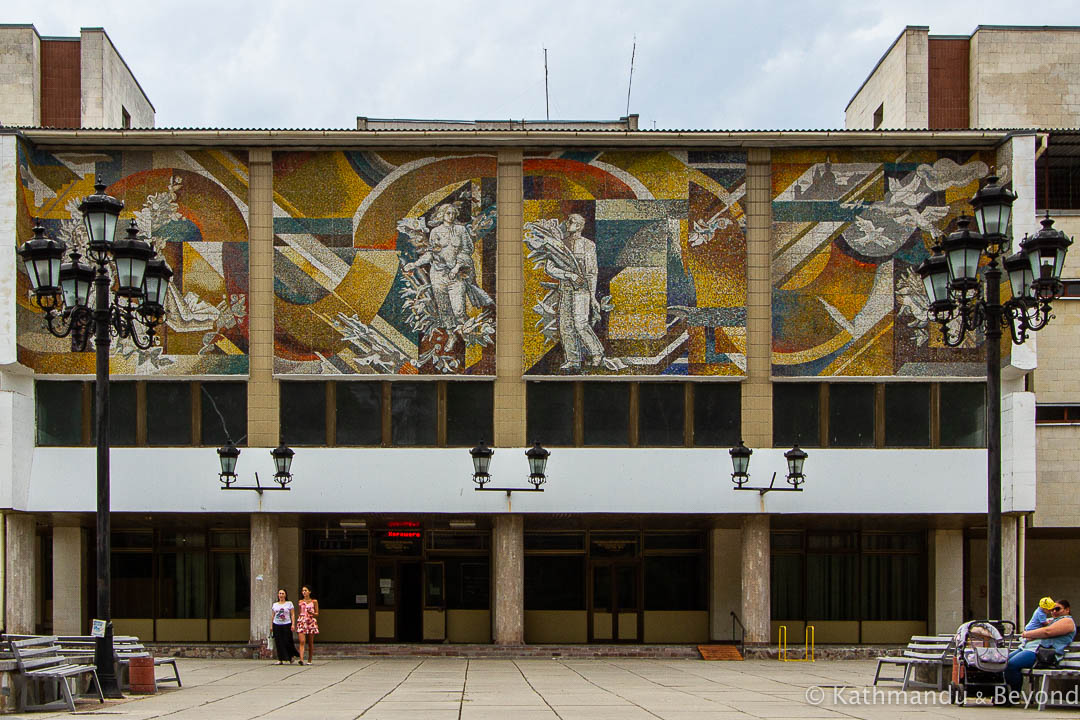
We also ponder their meaning.
Originally in the style of socialist realism, the officially sanctioned art form of the USSR, public murals of this ilk began to appear all over the Union in the 1930s, not long after the dictator, Joseph Stalin, took control. With his death in 1953, his successor, Nikita Khrushchev, who denounced Stalin and the cult of his personality, put a stop to such ornamental Stalin-influenced art and it was only when Leonid Brezhnev became General Secretary about a decade later that it came back into fashion.
It is a fact that a large percentage of the mosaics were created for propaganda reasons. They were used as a medium to inspire the ideology of the Communist Party and glorify Soviet achievements: astronauts in space, hardy peasants toiling in the fields, engineers and scientists working hard on behalf of the Union’s citizens and strong but caring Soviet soldiers protecting them from the fascist West. The list goes on but there were other reasons behind the creation of this monumental art form in public places, with the simplest of these being the belief that a riot of colour here and there would inspire the people of the Soviet Union and brighten up their day.
The reality probably could not be further from the truth but there must have been an element of looking at them back then and thinking, “that’s pretty nice!” Sure, I accept I didn’t live through, what was for many a miserable and depressing time but a lot of these mosaics were a kaleidoscope of every colour under the sun and there must be some logic to the principle mentioned above? Just look at bus stops in that part of the world, for example, or Kindergartens or Youth Centres. Where there was a mosaic or mural, there was always vividness.
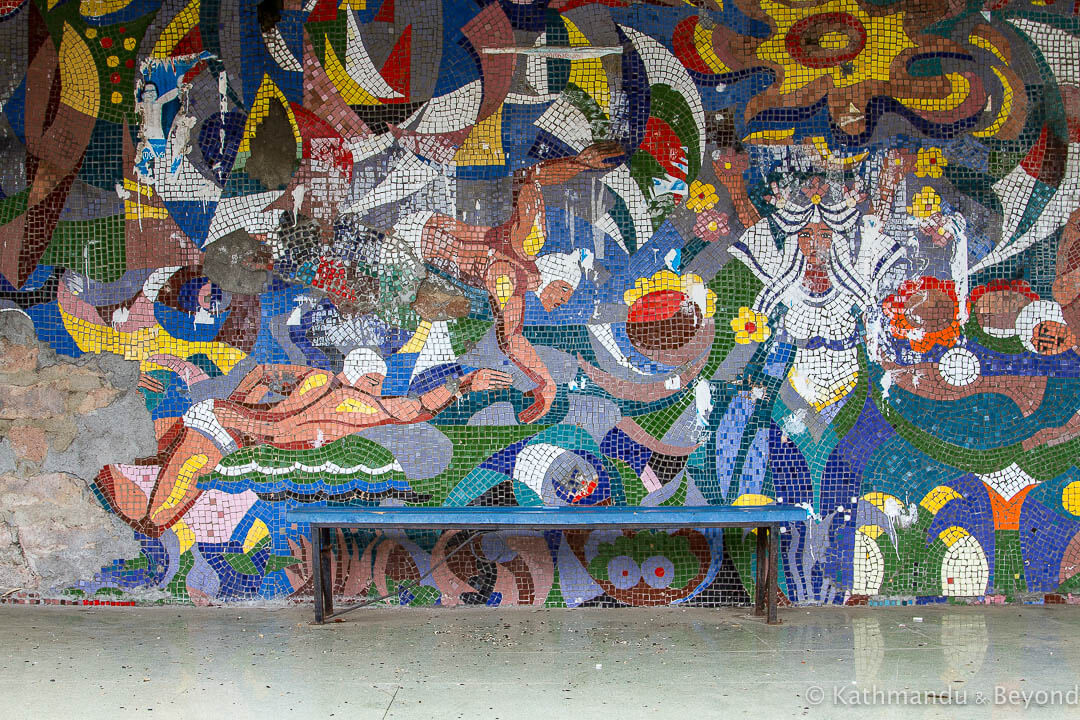
Only sanctioned artists, i.e. those who belonged to the Artists’ Union of the USSR, were commissioned by the state to create this utopian art form. As for the mosaics themselves, they were usually made of very small pieces of glass and/or ceramic and, although the blueprint for each one needed to be signed off by an approving committee before work could commence, the artists were often able to sneak in something of their own personal taste into the final piece. This was the 1960s and beyond and is the reason why so many of the mosaics that were created incorporate abstract and surreal elements as well as a feeling of “what the heck is going on there?” when you stop to look at them in more detail.
During the height of the Soviet Union’s construction spree in the 1970s and ‘80s, 5% of the budget for a new public building was given over to aesthetics, in other words, wall mosaics and murals as well as bas relief, which was another popular form of artistic expression during the time of the USSR. For prestigious structures, or important mosaics, such as those portraying Vladimir Lenin, the amount of money that would have been allocated would have undoubtedly been higher.
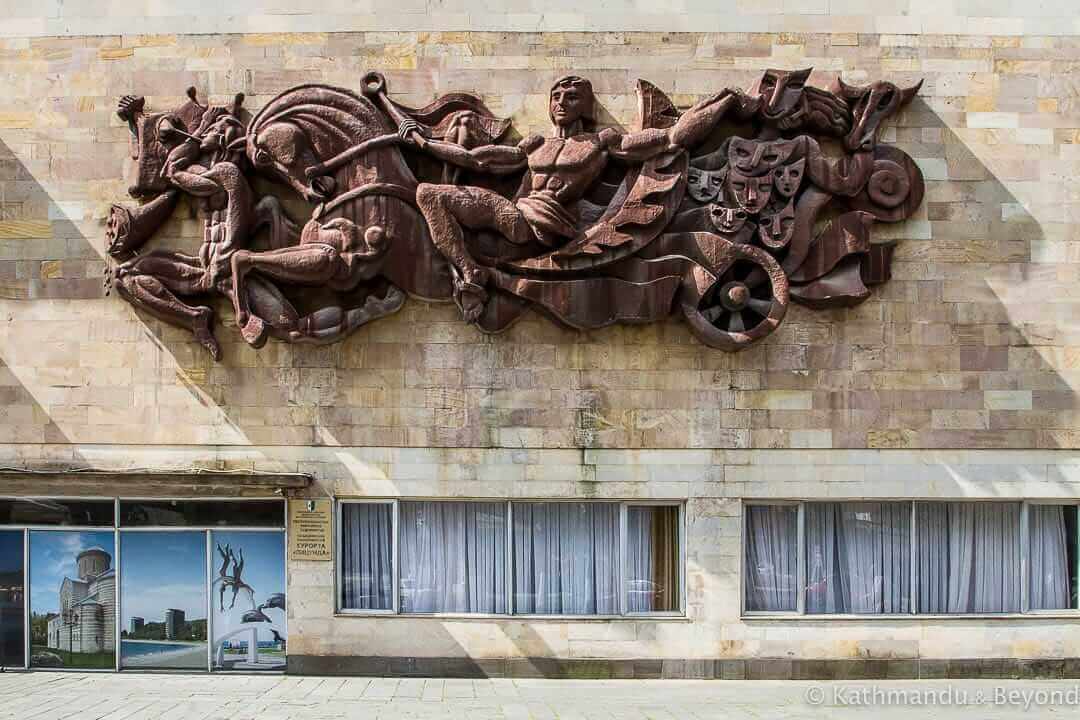
The amount of work that must have gone into some of the gargantuan mosaics, ones that cover an entire wall of an apartment building, for example, must have been painstakingly slow. What’s more, the influence of wall mosaics and murals adorning public spaces also spread beyond the Soviet Union, with other countries in the Eastern Bloc, Bulgaria and Romania for example, getting in on the act.
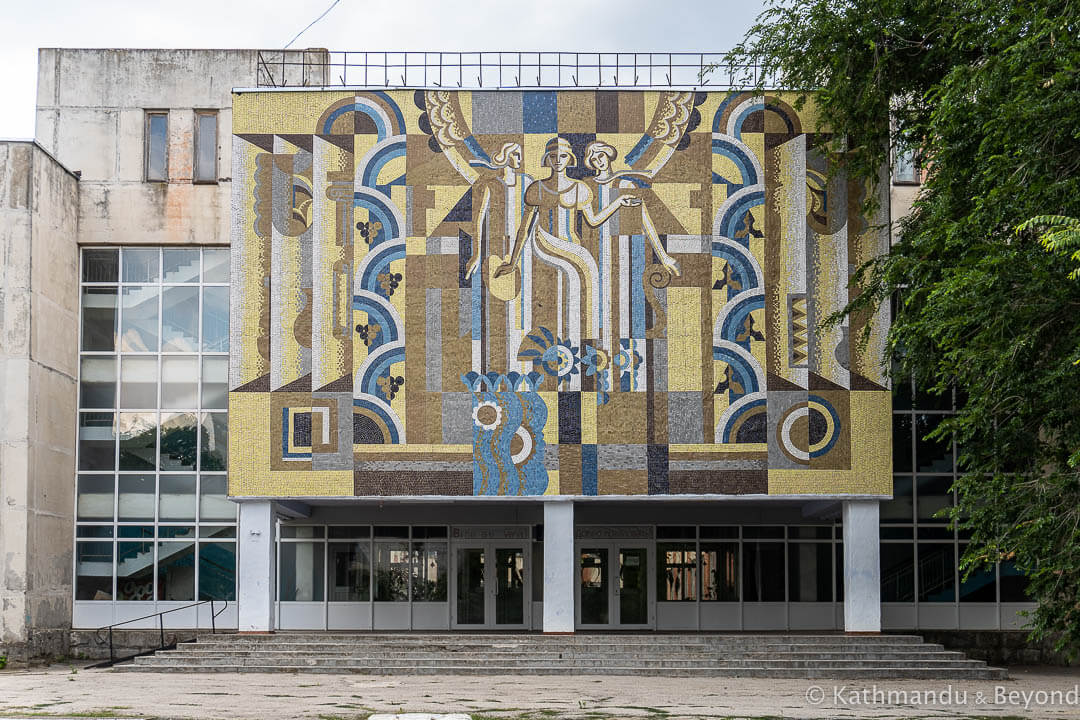
I’m about to sound like a stuck record because I say this every time I write about the former USSR but, it was the dissolution of the Soviet Union in 1991 that put a stop to the creation of any new mosaics in the territory. It was also the reason for the start of their slow demise and why so many of them are in such poor condition today.
After the breakup, some former Soviet states took to the task with zeal and painted over walls and public spaces that were decorated with mosaics (and murals) while, in other countries, they were erased when the opportunity arose, for instance when a structure needed to be renovated. But, for the best part, the majority of these mosaics have simply been ignored and given over to the elements since the ending of the Union, a period of time that is now fast approaching its thirty-year anniversary.
Some of the mosaics we see during our time in the region are still in reasonable condition but I suspect this is probably down to luck and better craftsmanship in the first instance rather than because any authority is taking care of them. I might be wrong on this score. Maybe some of these remaining mosaics are looked after and touched up etc. but, the only time we’ve ever seen mosaics left in situ while building work is being carried out around them is in the small town of Sucleia in Pridnestrovie (Transnistria).
As with so many visual reminders from that period (architecture, monuments etc.), wall mosaics are slowly but surely disappearing and the population in places where they are still in evidence are either too young to remember what they represent, old enough that they want to forget about what they represent, or in-between and simply have better things to concern themselves about. Only on a couple of occasions has a local person approached us and tried to talk to us about the mosaic we are looking at, and subsequently photographing. That person has always been quite old and therefore, we assume, lived through the Soviet Union. Given our command of Russian/the local language in these countries is borderline zero, we’ve never been able to understand what they are telling us so we don’t know if they are praising or vilifying the artistic facade in front of us. Most people who see us, however, either ignore us or give us a look as if to say “why on earth would you want to photograph that?”
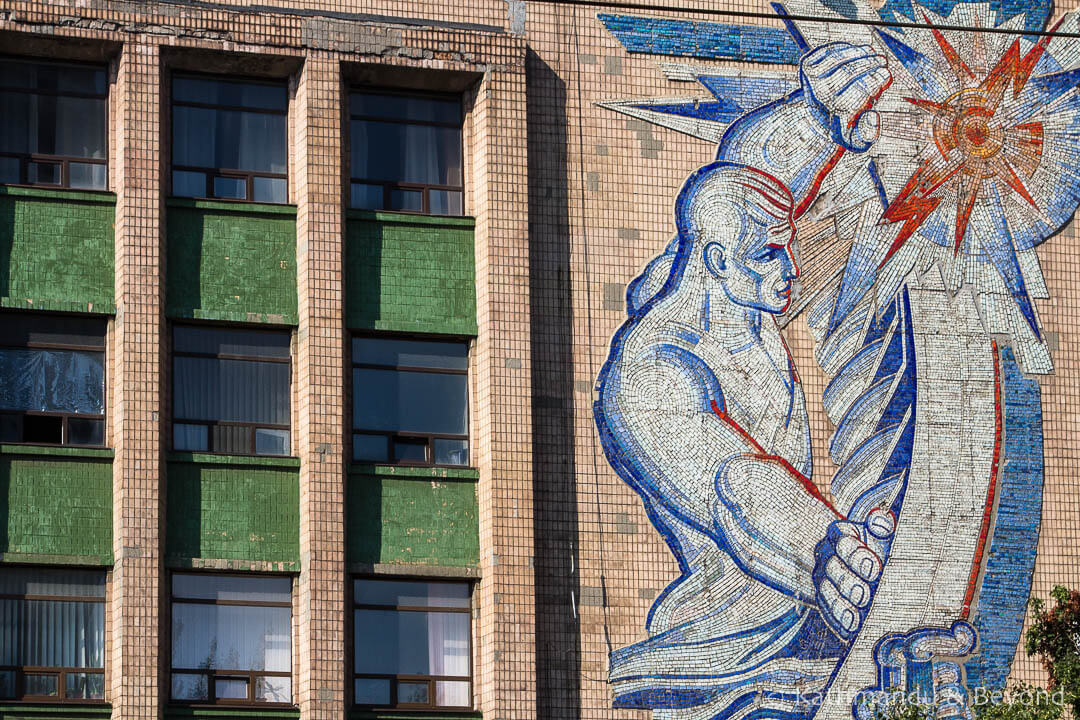
Below are twenty-five examples of public mosaics that we have seen over the years. The majority are in the former Soviet Union but one or two are in other countries that were once part of the communist world. We think they are magnificent and should be preserved but in reality, we know this is unlikely to happen and so we will continue our quest to see as many as possible before they perhaps perish forever.
Examples of what we think are some of the best examples of mosaics in the former Eastern Bloc
“Misha” 1980 Summer Olympic mascot
Osh, Kyrgyzstan
Year created the late 1970s
Artist Not known
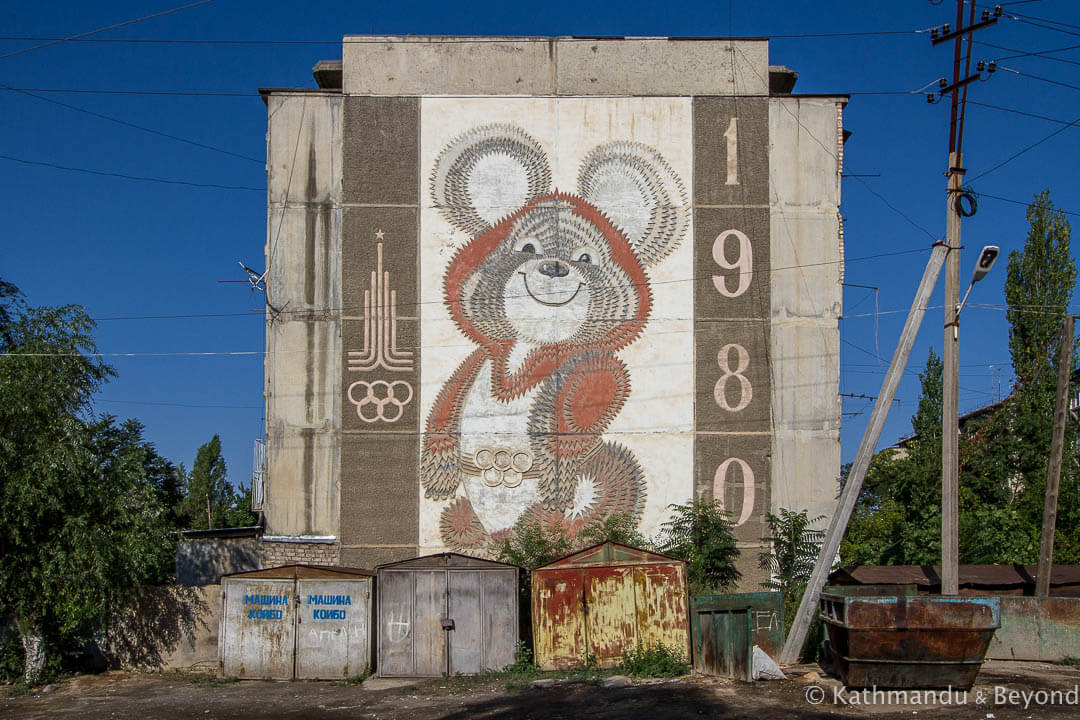
Sports School No. 1
Cahul, Moldova
Created 1989
Artist Gheorghii Hadjioglov
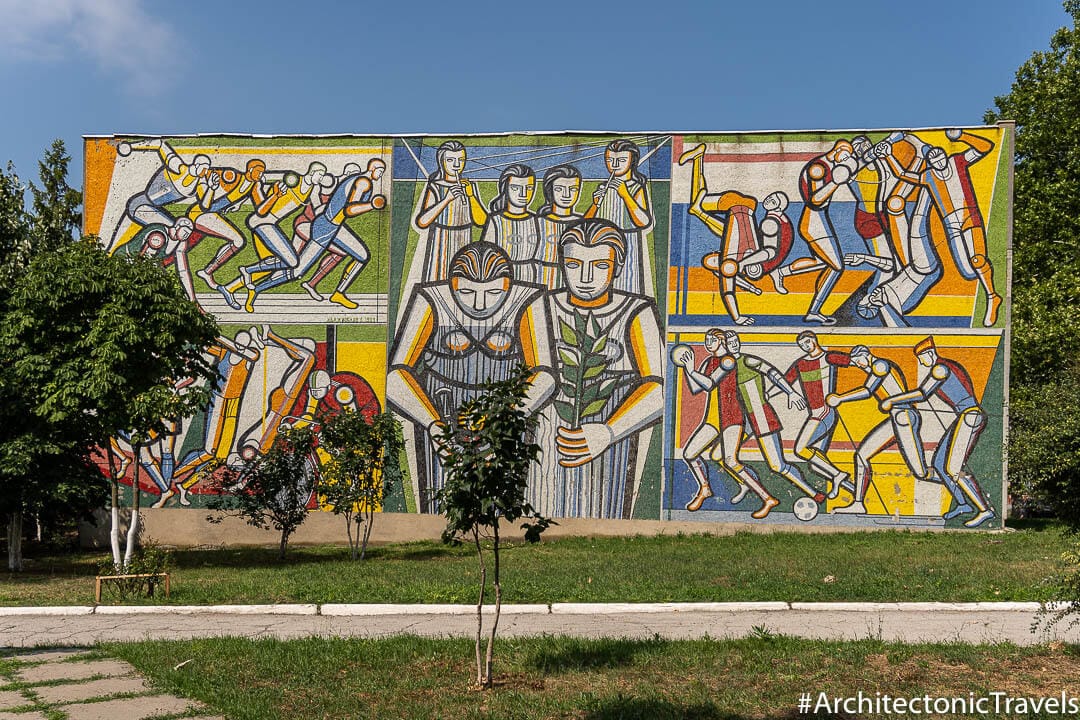
“Man and the technical age”
Part of the Municipality of Karlovo
Karlovo, Bulgaria
Created 1978
Artist Hristo Stefanov
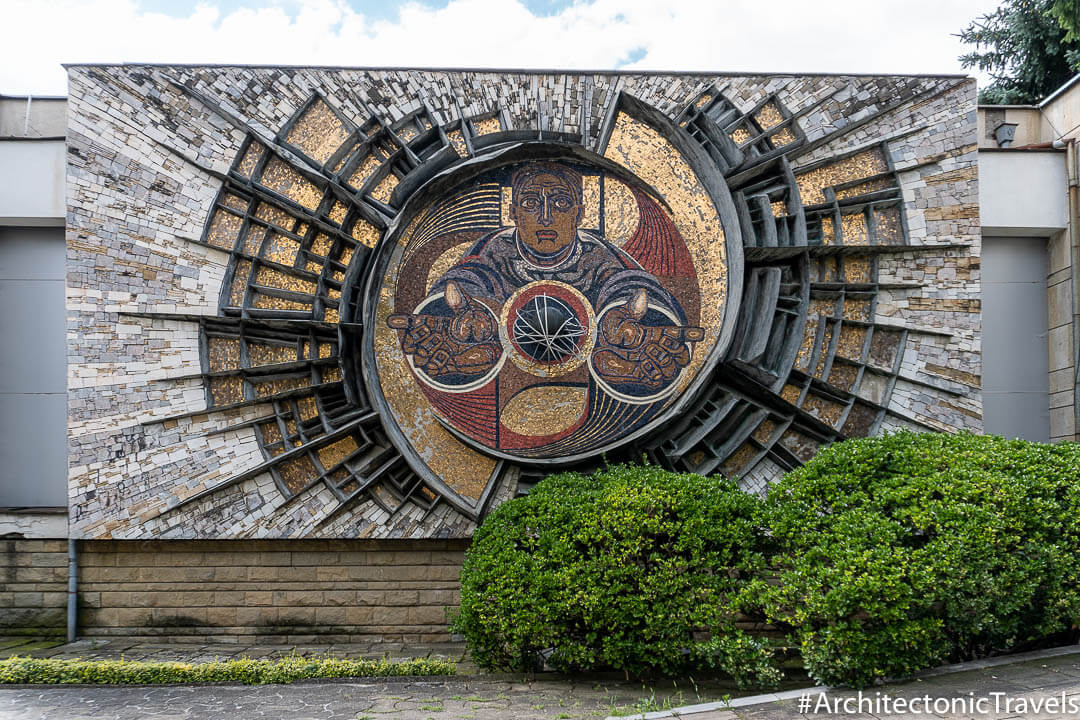
Sanatorium Mountain Valley (Sanatorium Borjomi)
Borjomi, Georgia
Created 1984
Artist not known
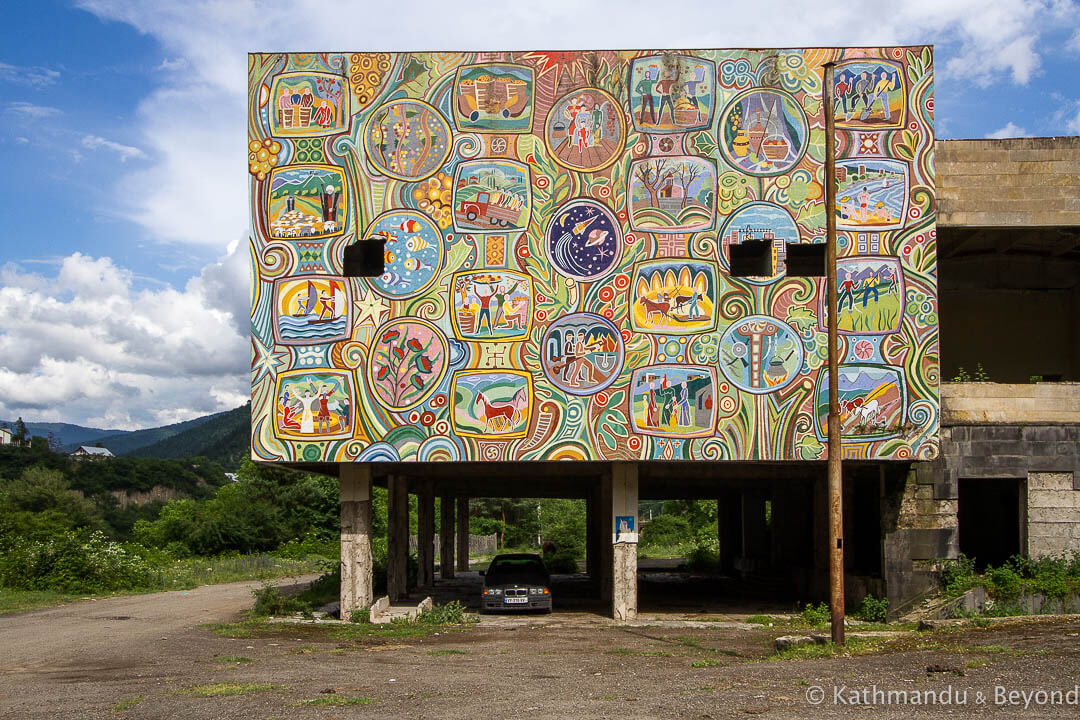
Rivne High-Voltage Equipment Plant (formerly High Voltage Union (RZVA))
Rivne, Ukraine
Created 1967
Artist not known
Rivne High-Voltage Equipment Plant, Rivne
“The Legend of Chisinau”
Chisinau, Moldova
Completed 1973 (dismantled 2021)
Artist Mikhail Burya
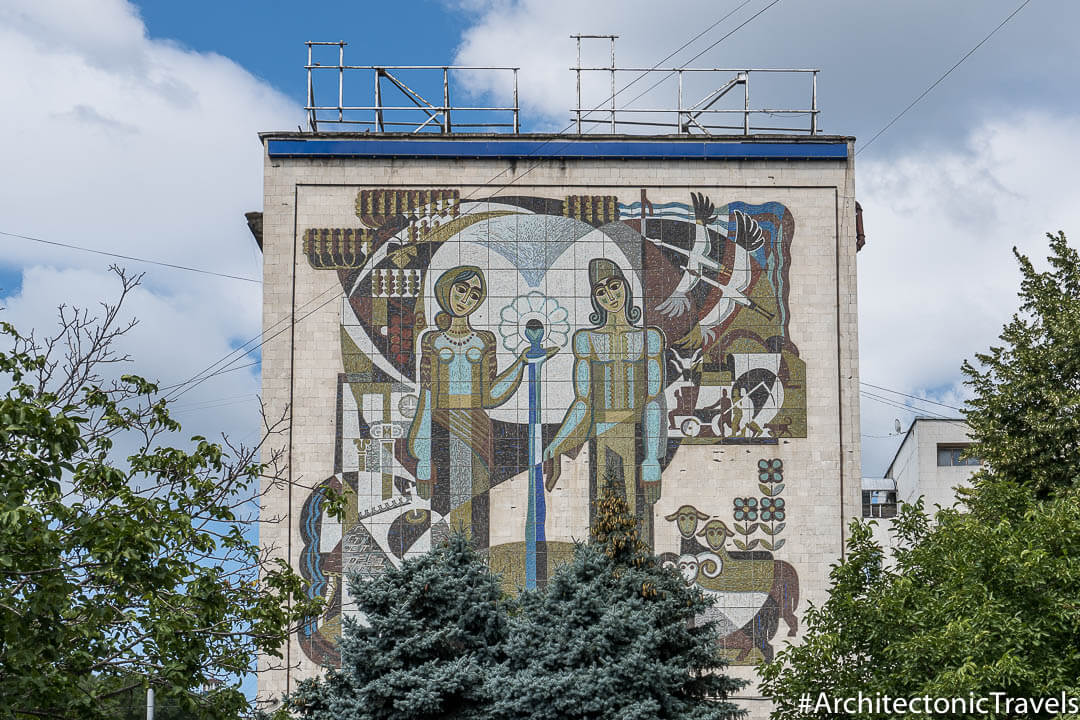
Ortachala Fire Station
Tbilisi, Georgia
Created 1979
Artist Givi Kervalishvili
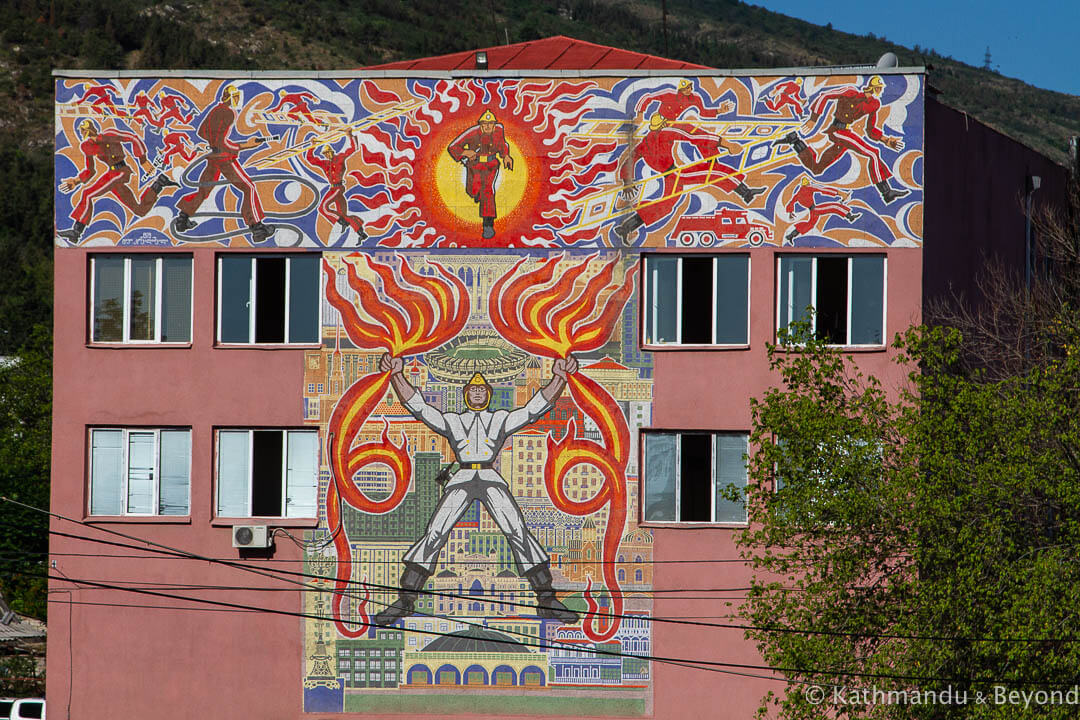
Puppet Theatre Lukhtak
Dushanbe, Tajikistan
Created 1985
Artists Alexander Grigorov and Ilya Ilyaev
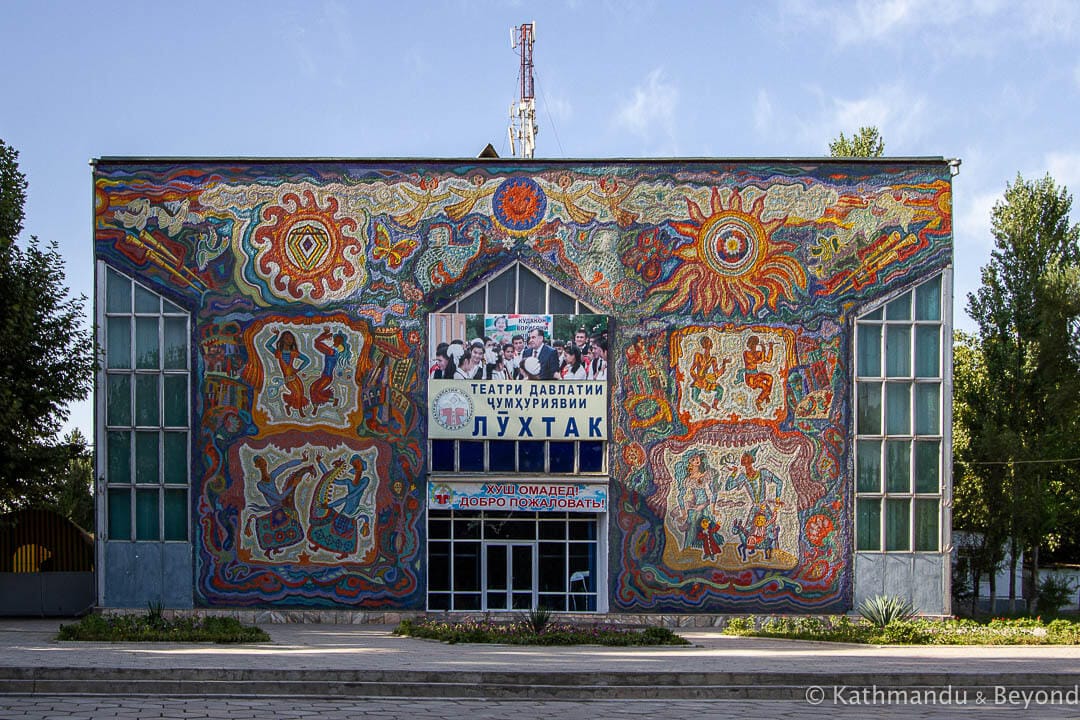
“Făt-Frumo”
Bendery (Bender), Pridnestrovie (Transnistria)
Year created not known
Artists Mikhail Afanasyevich and Vladislav Obukh
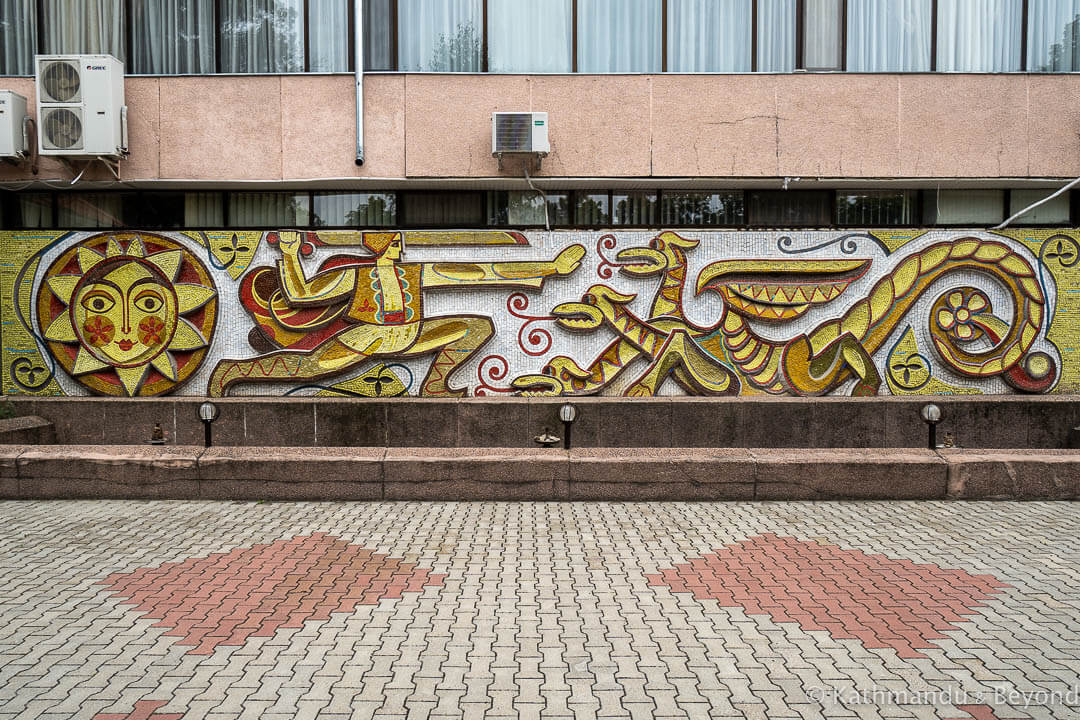
“Taming the Fire”
Part of S.A. Termocom
Chisinau, Moldova
Created 1988
Artist Alexander Kuzmin
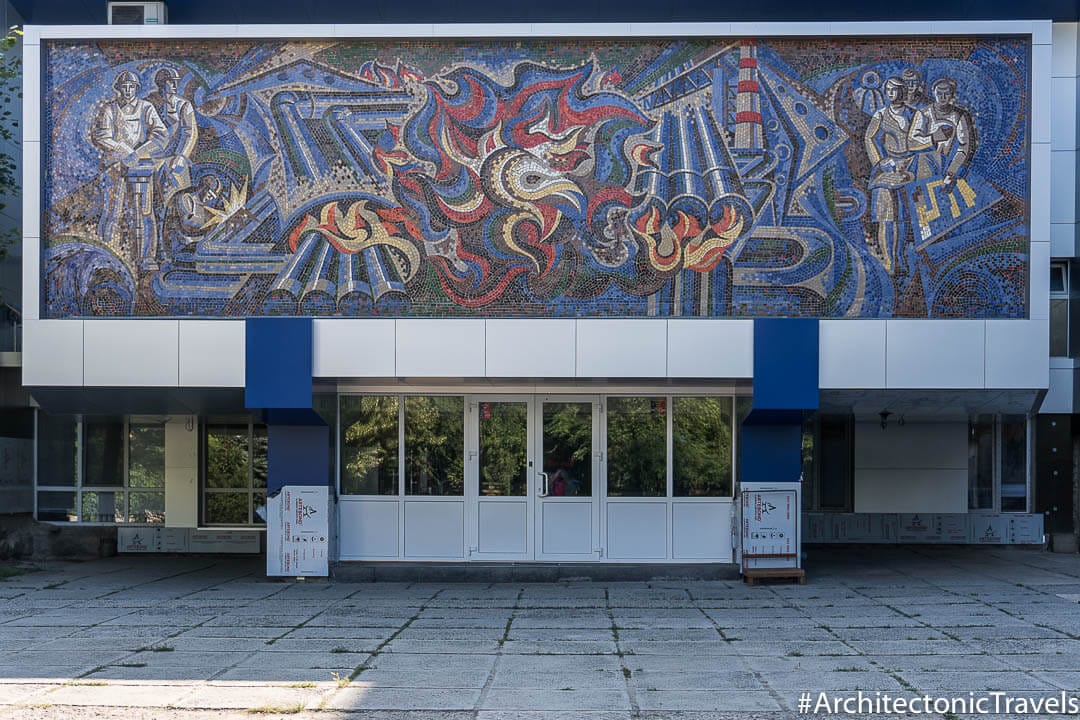
Residential Building
Tulcea, Romania
Created 1978
Artist Spiru Chintila
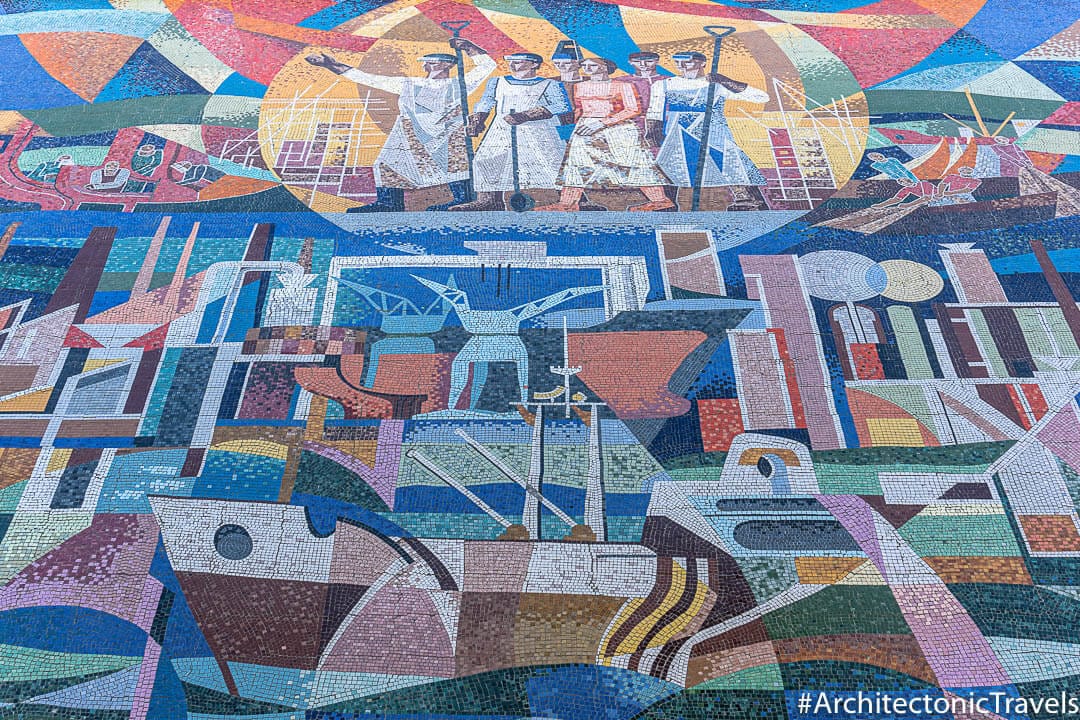
“V.I. Lenin”
Part of the Strategic Missile Forces and MVO Military Sanatorium (Sanatorium MVO Sukhum)
Sukhumi, Abkhazia
Year created not known
Artist not known
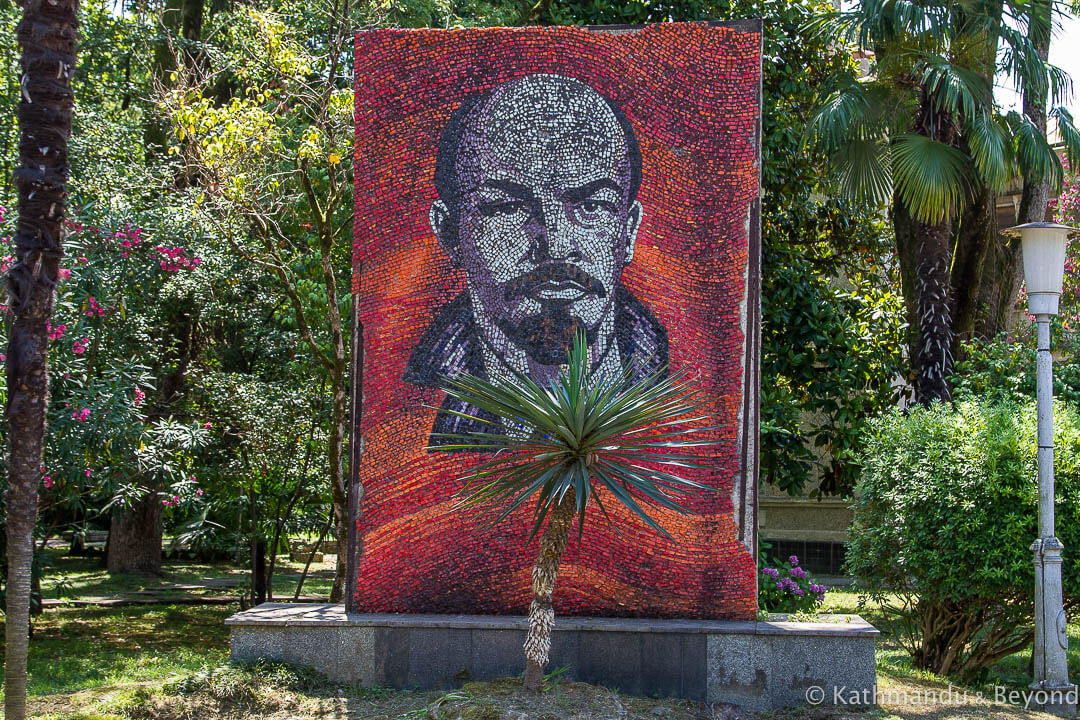
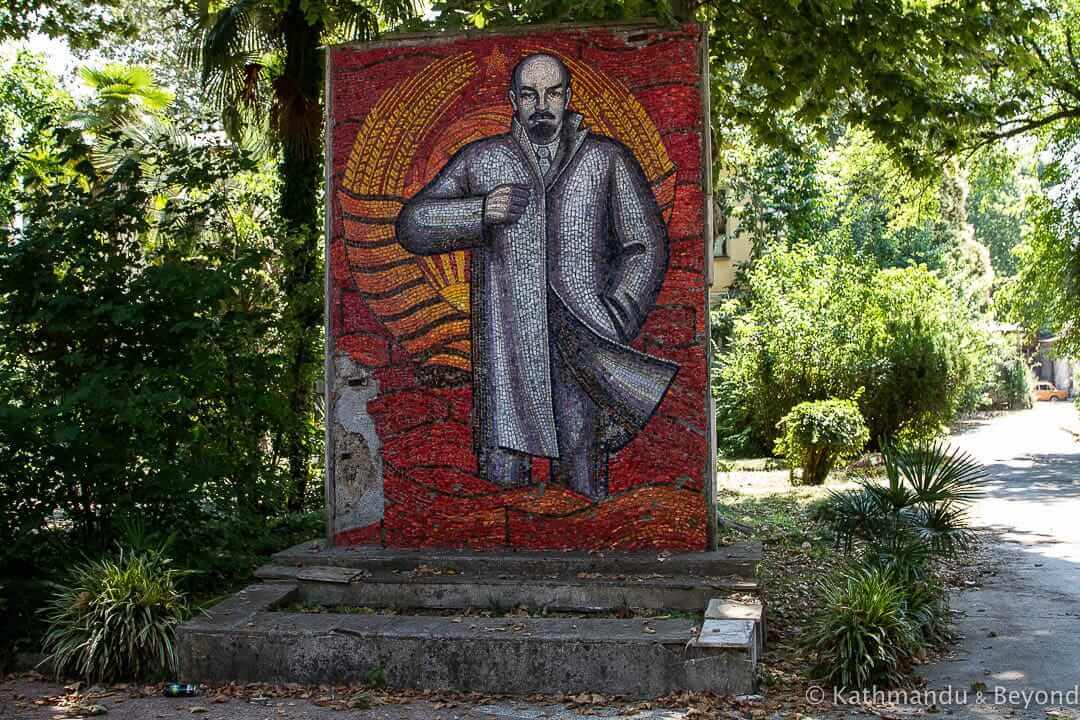
Business Centre (former House of Political Education)
Tbilisi, Georgia
Created 1980
Artist Zurab Tsereteli
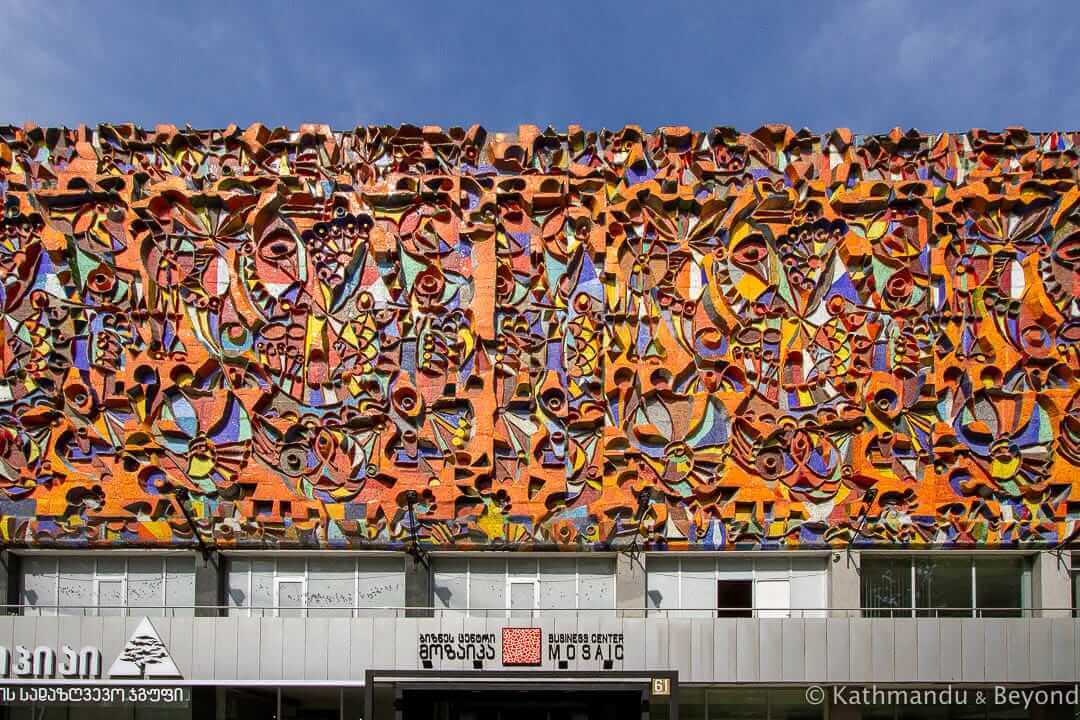
Linella Express (former Electrical Appliance Store)
Chisinau, Moldova
Completed 1968
Artists Mikhail Burya and Vladislav Obukh
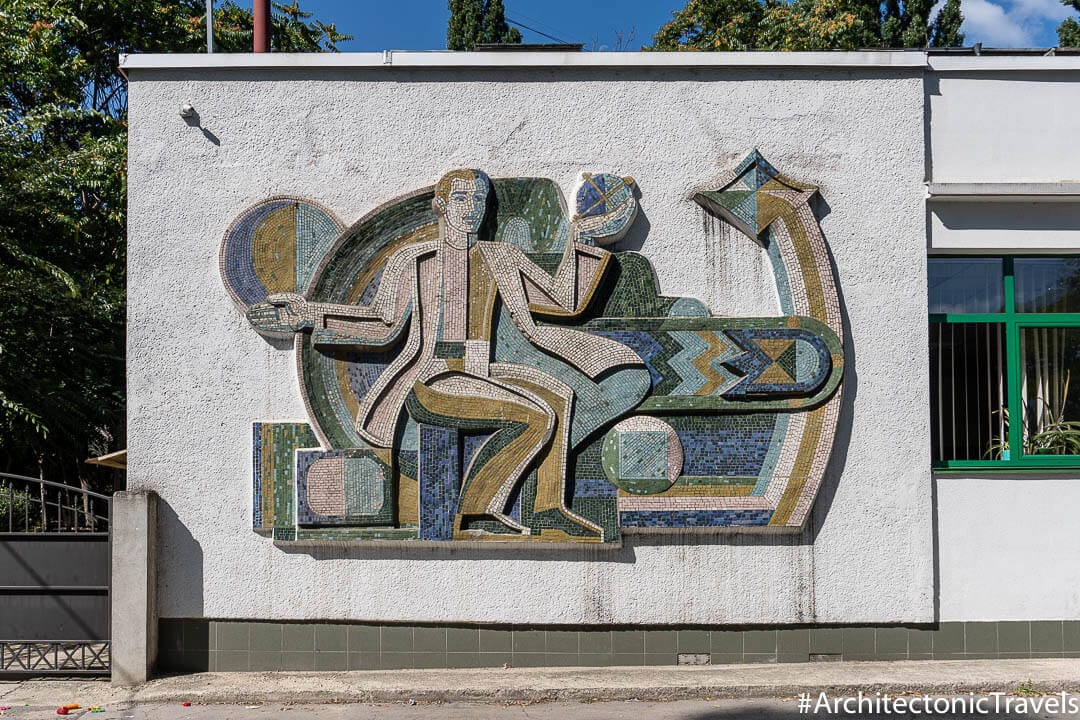
“Dreams of Communists”
Part of Expo Georgia 8th Pavilion (formerly VDNKH Exhibition Centre)
Tbilisi, Georgia
Created between 1960 and 1971
Artists Leonardo Shengelia, Guram Kalandadze, Aliko Gorgadze, Tezo Asatiani and Kukuri Tsereteli
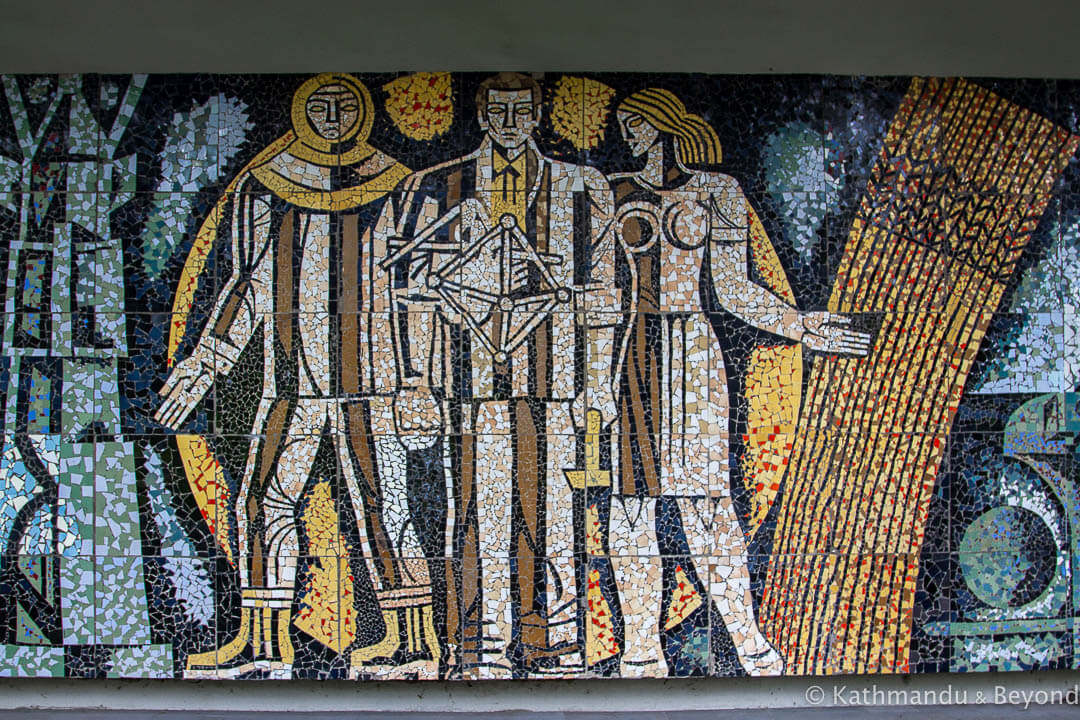
Restaurant ‘Adjara’ (Restaurant ‘Achara’)
Novy Afon (New Athos), Abkhazia
Year created not known
Artist Zurab Tsereteli
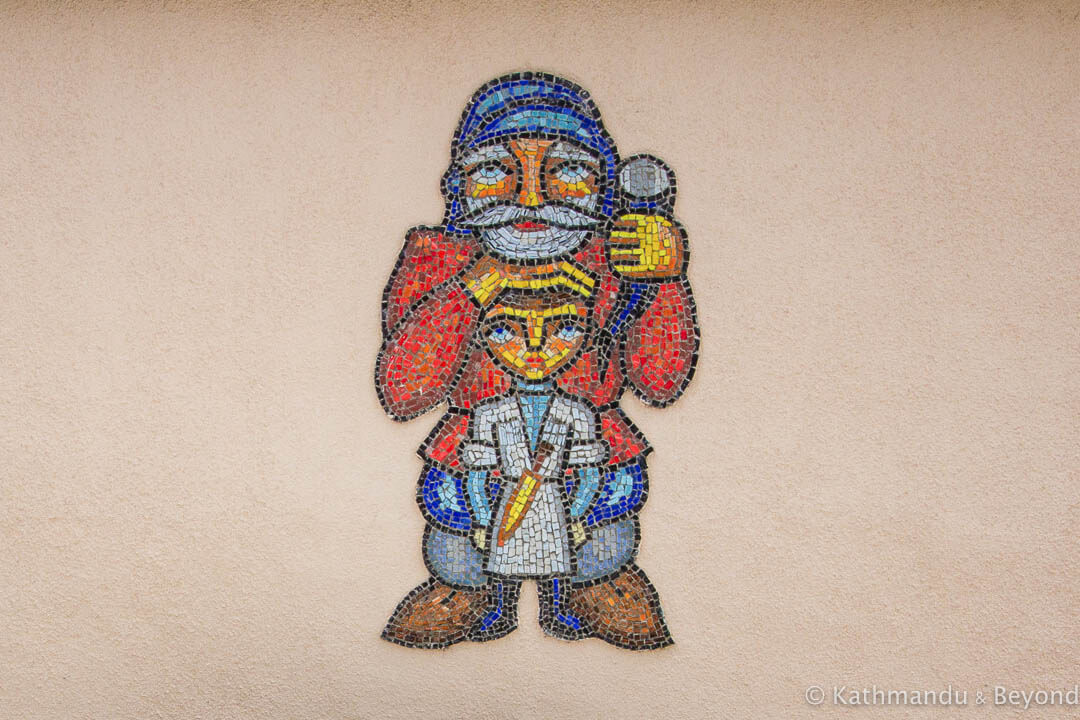
“Avicenna”
Dushanbe, Tajikistan
Created 1988
Artists Alexander Grigorov and Ilya Ilyaev
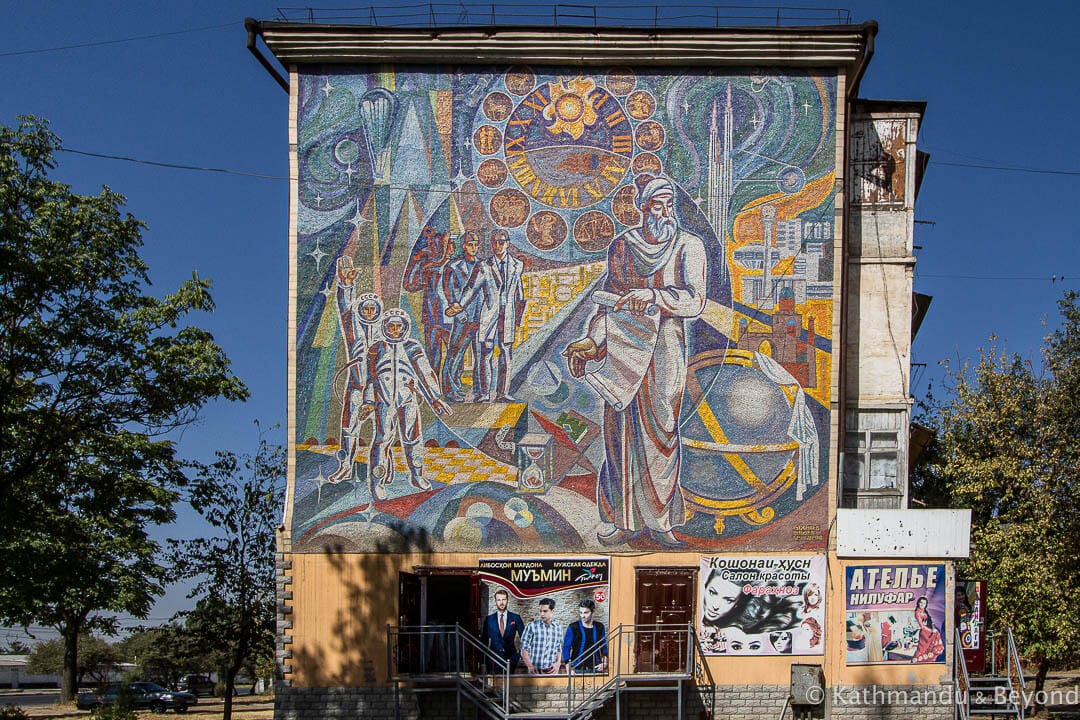
“Peace Dove”
Part of Mitana Factory
Tbilisi, Georgia
Created 1980s
Artist not known
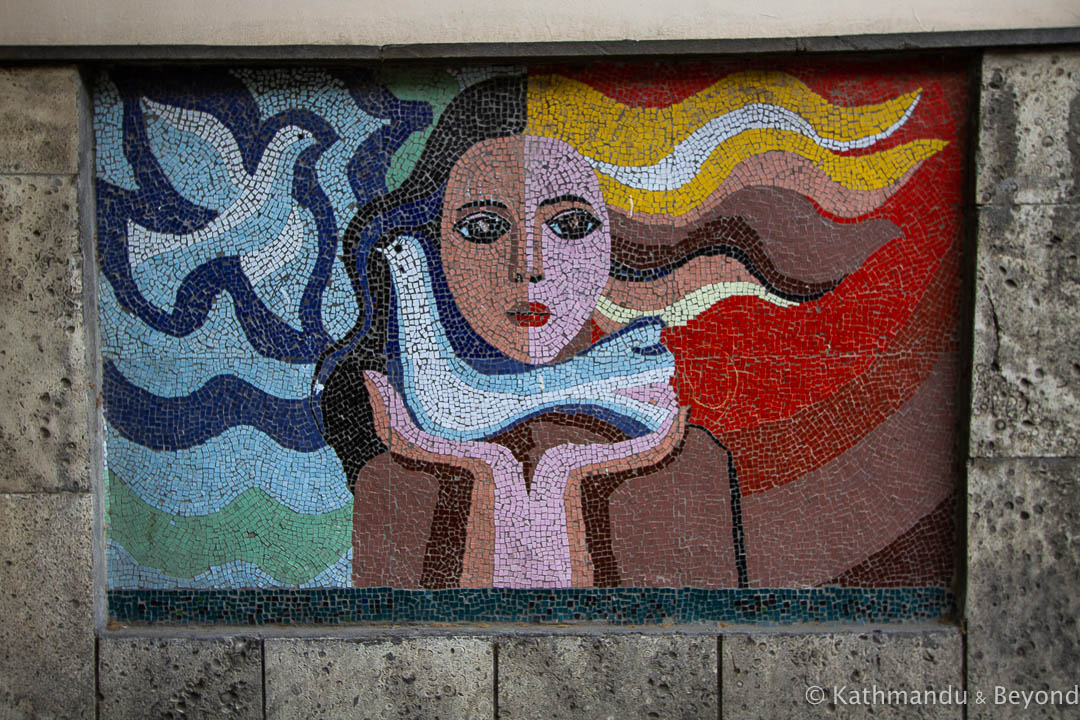
“The City is flourishing and being built”
Part of the Central Bus Station
Chisinau, Moldova
Created 1974
Artist Mikhail Burya
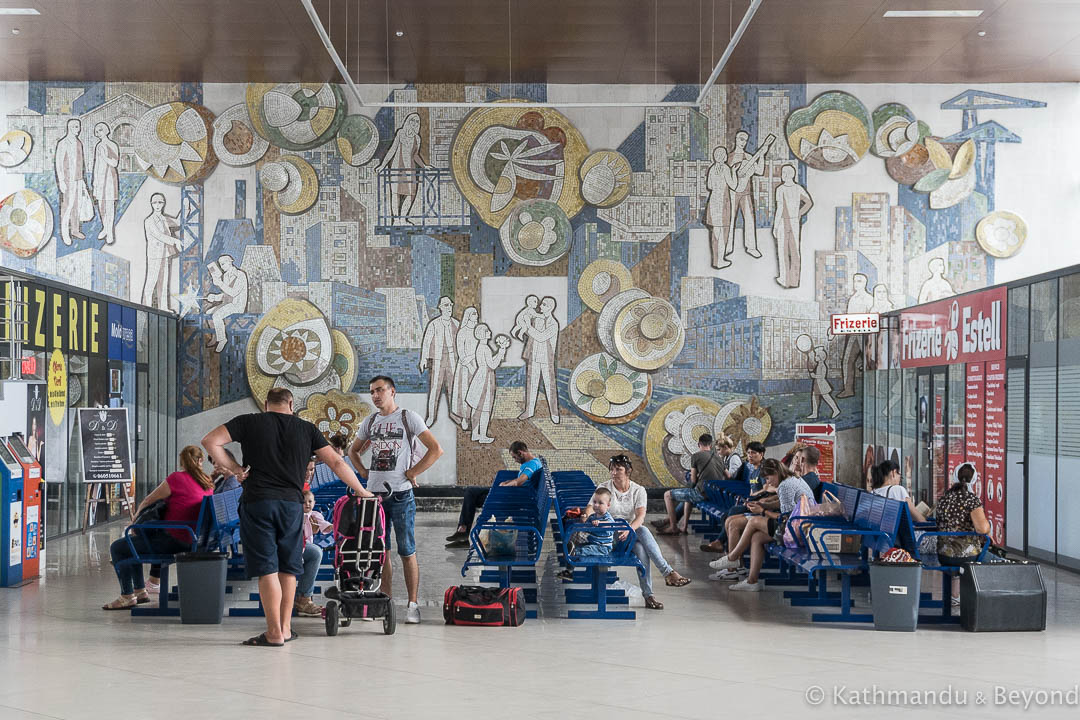
Residential Building (former Glass Factory)
Kutaisi, Georgia
Year created not known
Artist not known
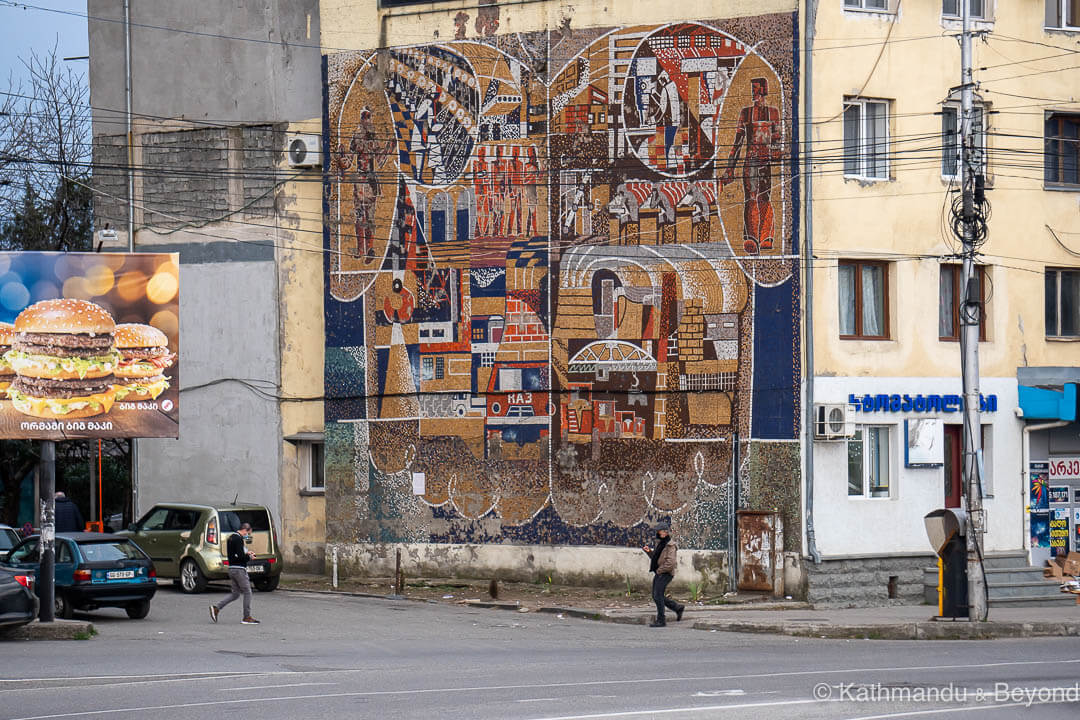
Driving School of the Civil Defence Organisation (DTSAAF)
Lutsk, Ukraine
Created 1970s
Artist Vasyl Gur
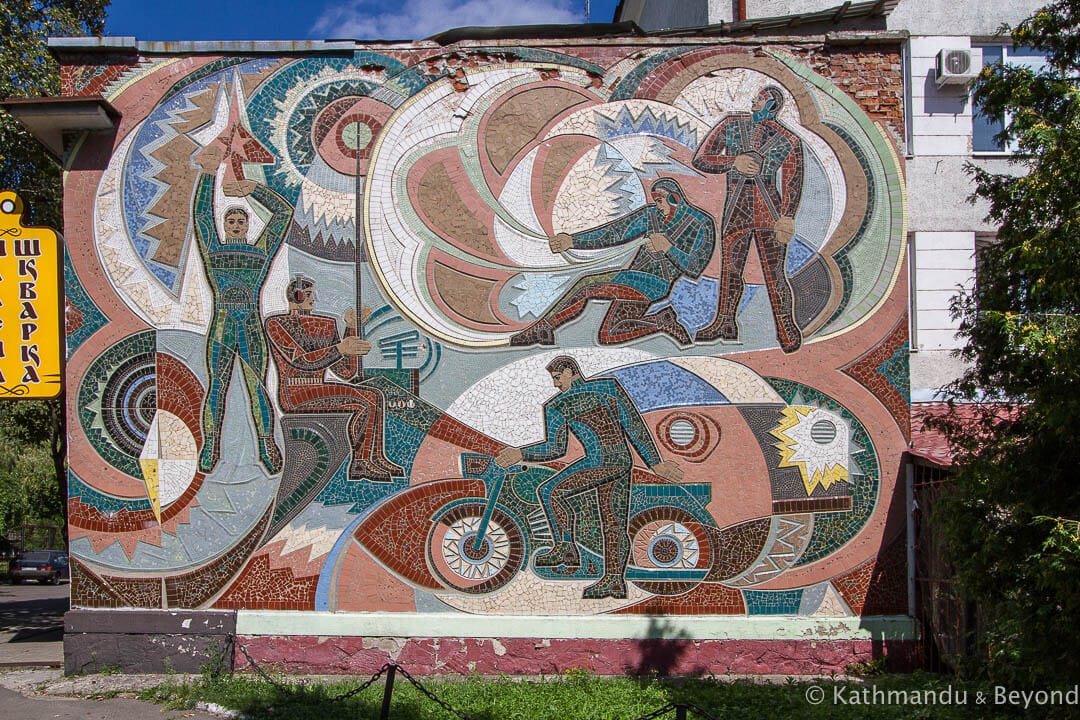
Palace of Culture
Cahul, Moldova
Created 1986
Artist Gheorghii Hadjioglov
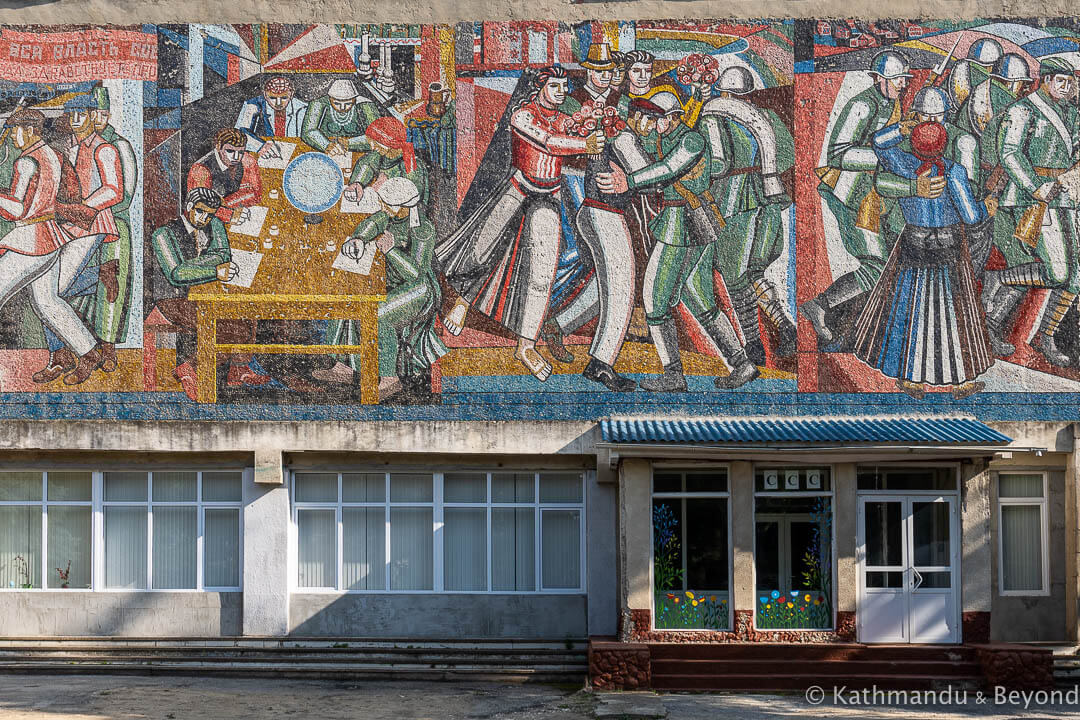
Dolphinarium
Batumi, Georgia
Created 1974
Artists Zaur Tsuladze and Vaja Bjalava
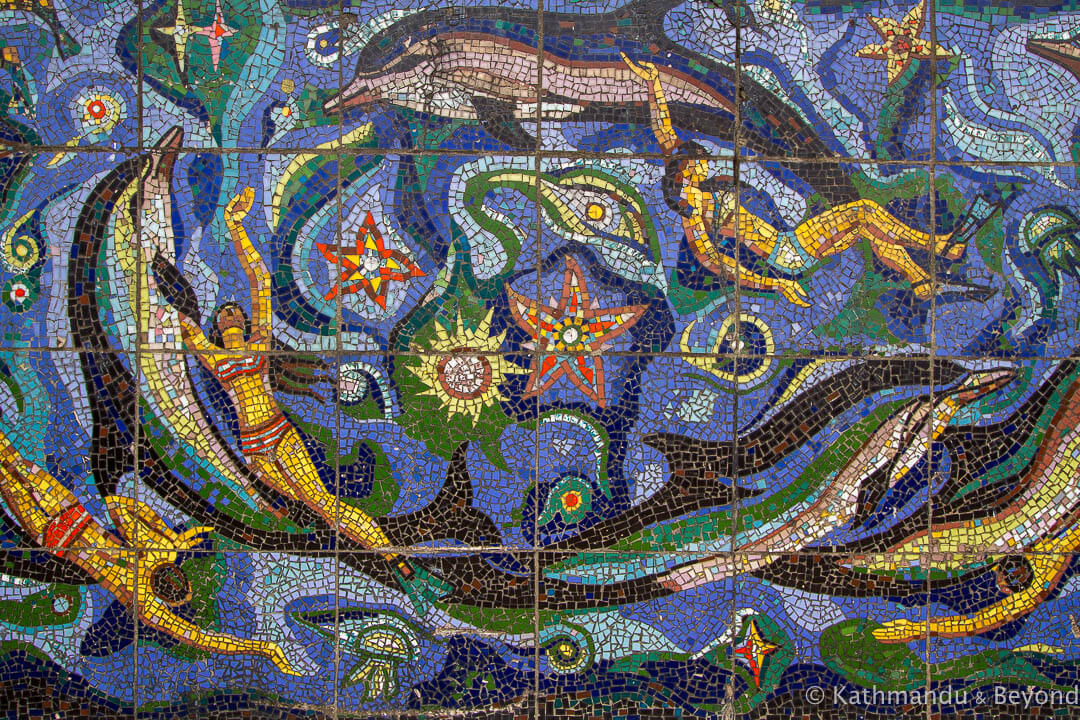
Kindergarten
Cahul, Moldova
Year created not known
Artist not known
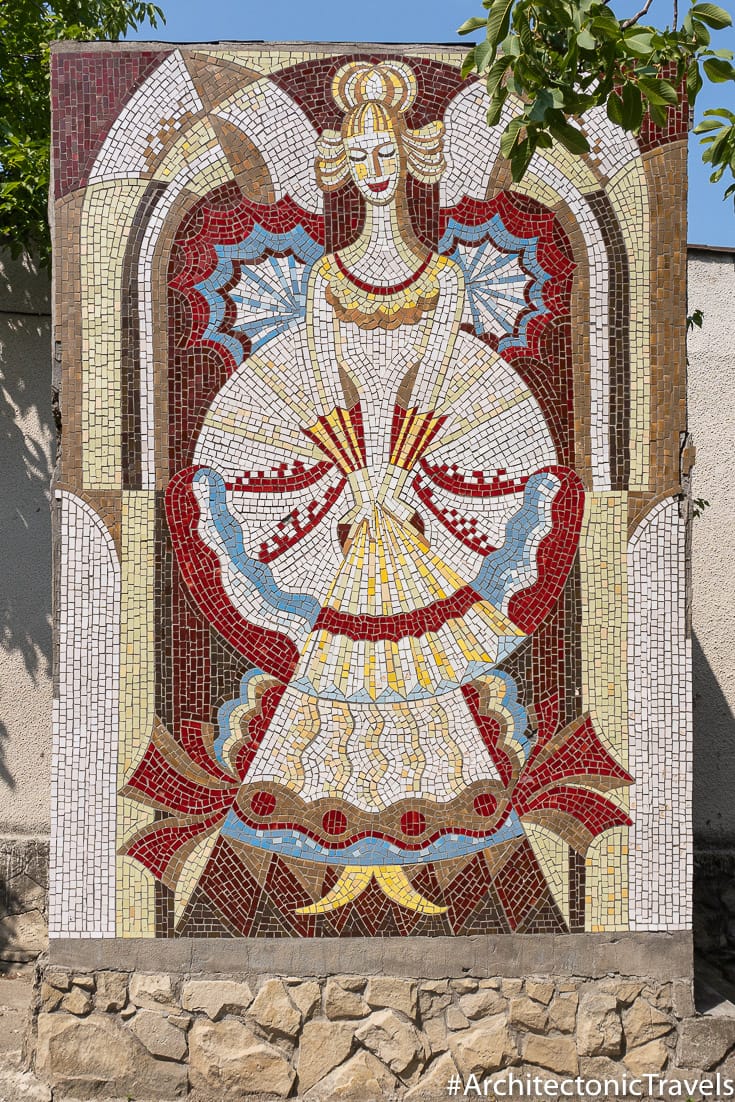
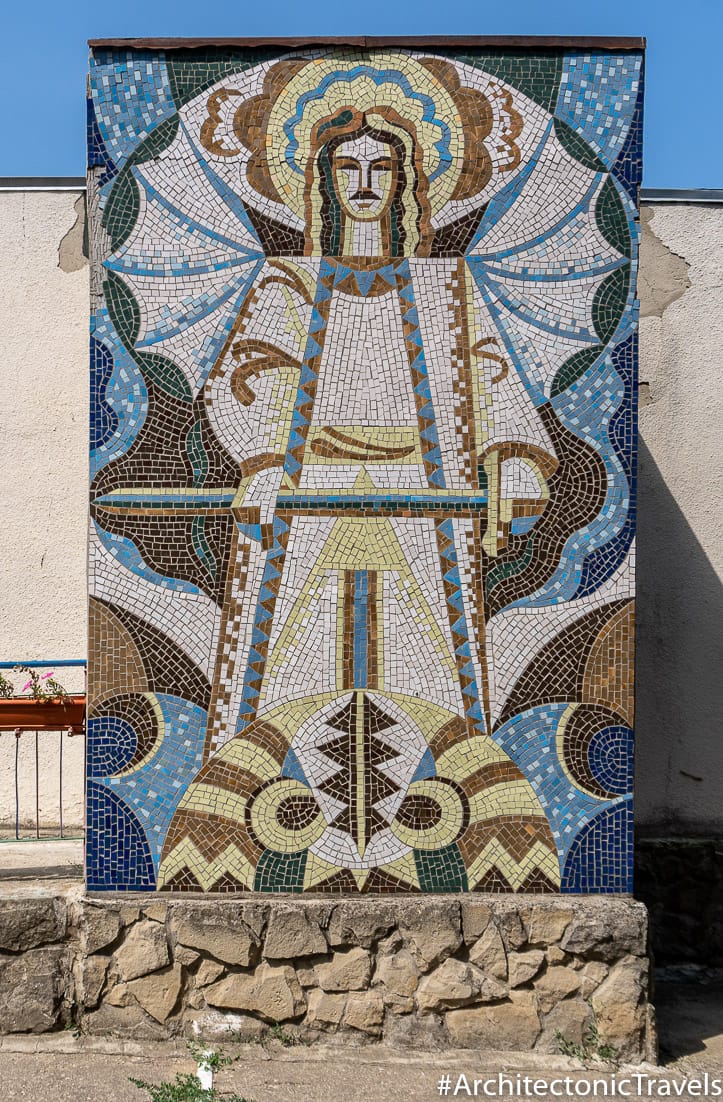
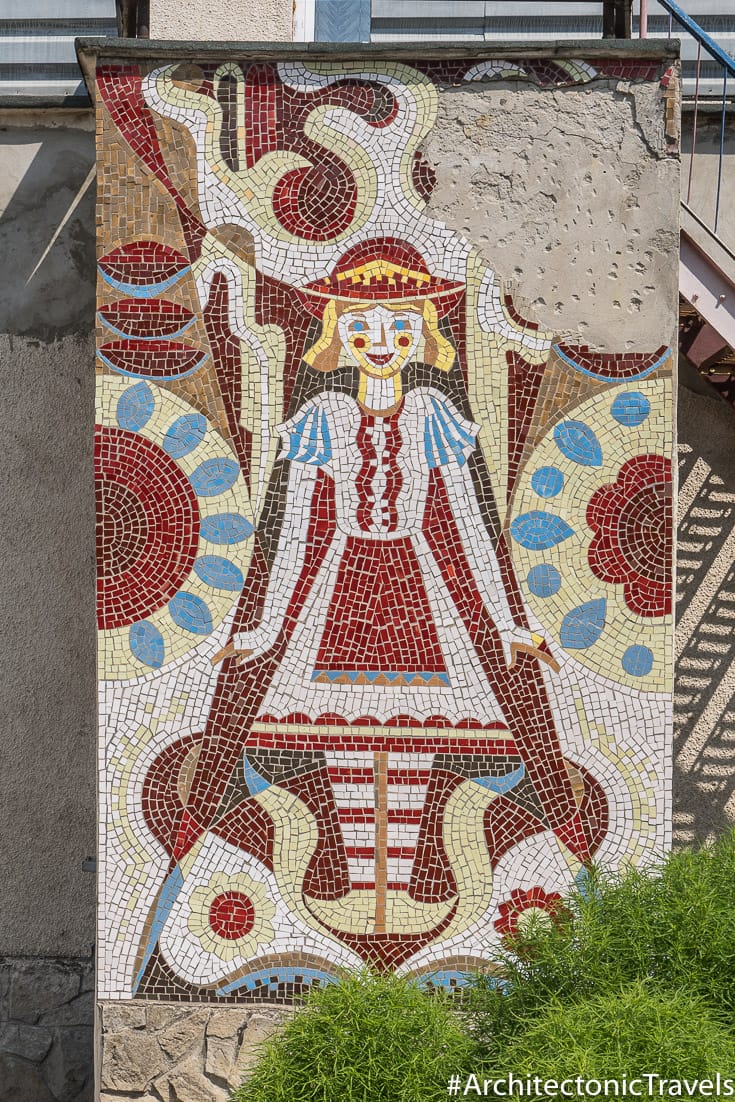
“V.I. Lenin”
Kulob, Tajikistan
Year created not known
Artist not known
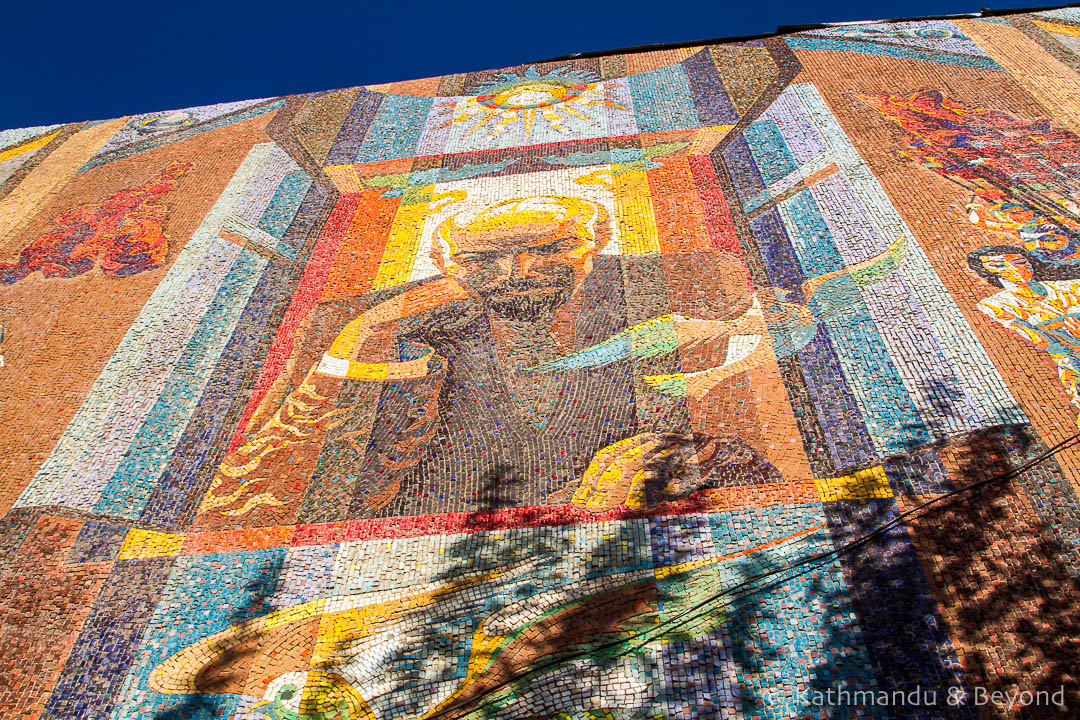
Other resources
And finally, if you are interested in seeing more of this monumental art, check out these three websites. Each one does a sterling job of documenting mosaics and murals in their respective region:
Kazakhstan: Monumental Almaty
Ukraine: Soviet Mosaics in Ukraine
Georgia: Soviet Mosaics in Georgia
READ MORE BLOG POSTS FEATURING COUNTRIES OF THE FORMER USSR
SEE MOSAICS, SOVIET ARCHITECTURE, MONUMENTS AND MORE ON ARCHITECTONIC
IF YOU’RE FAN OF SOVIET MOSAICS, PIN THIS POST TO YOUR TRAVEL BOARDS…
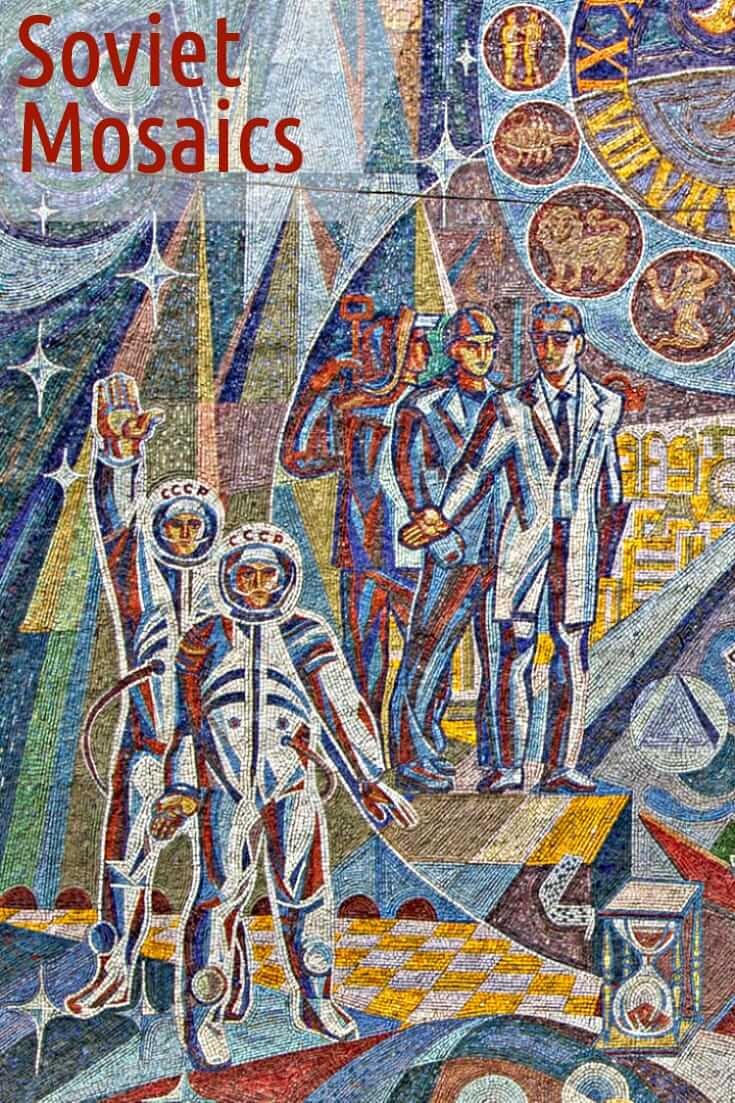
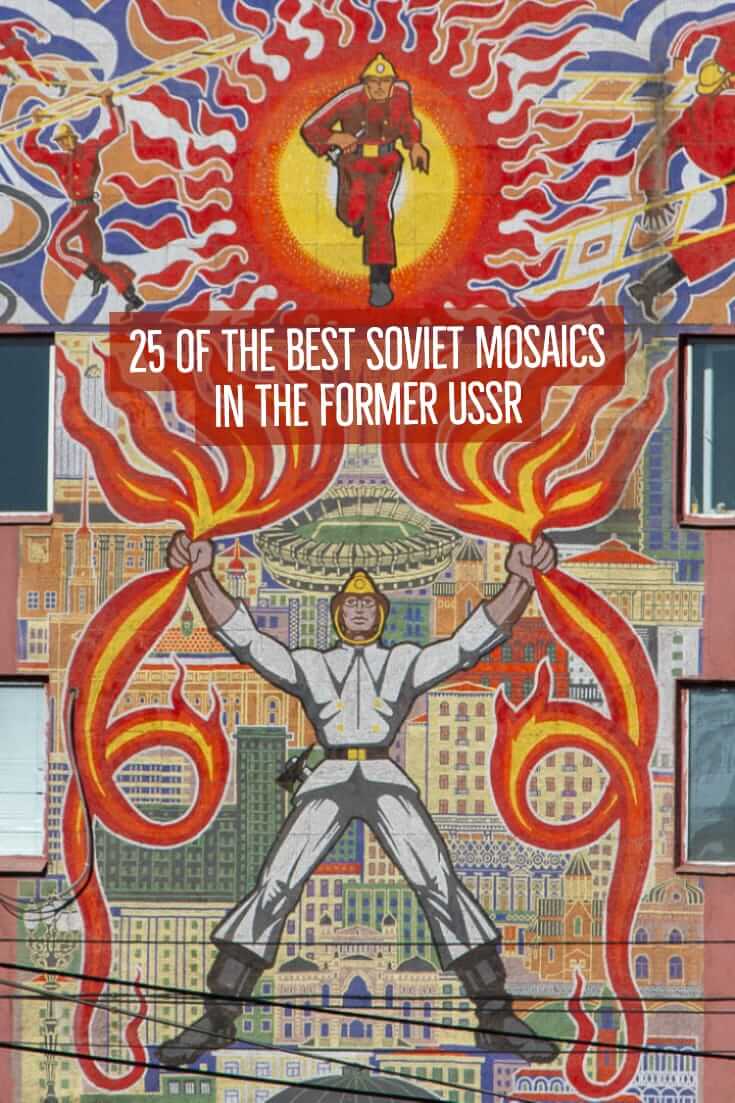
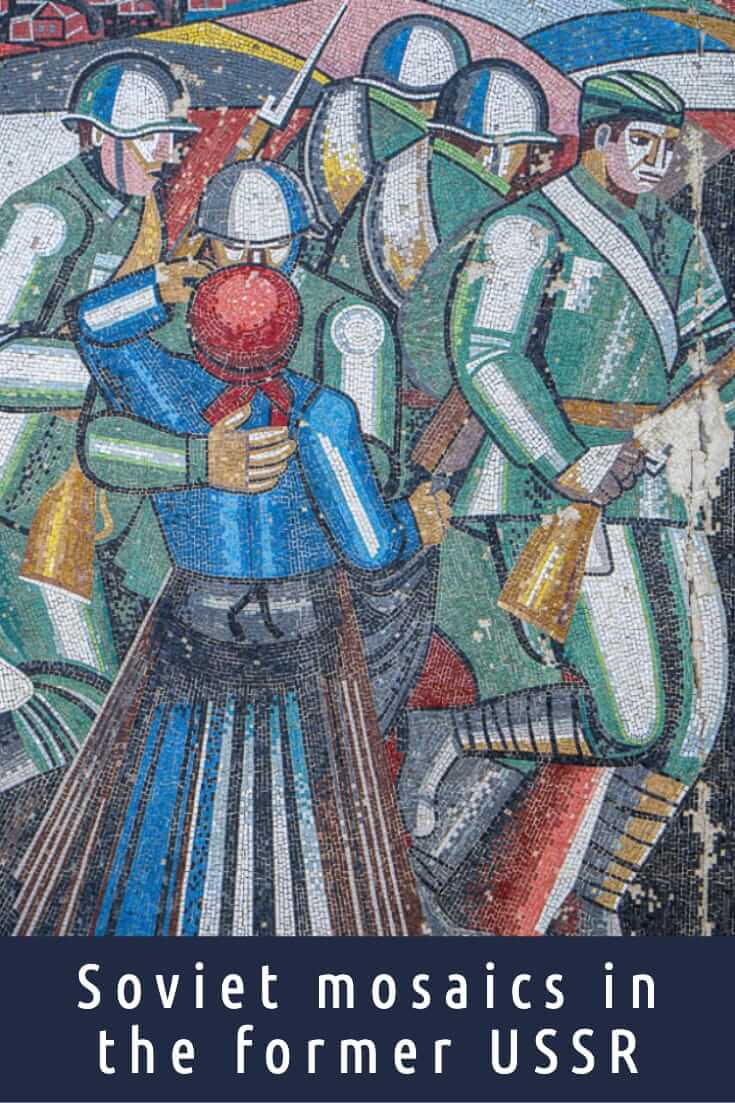

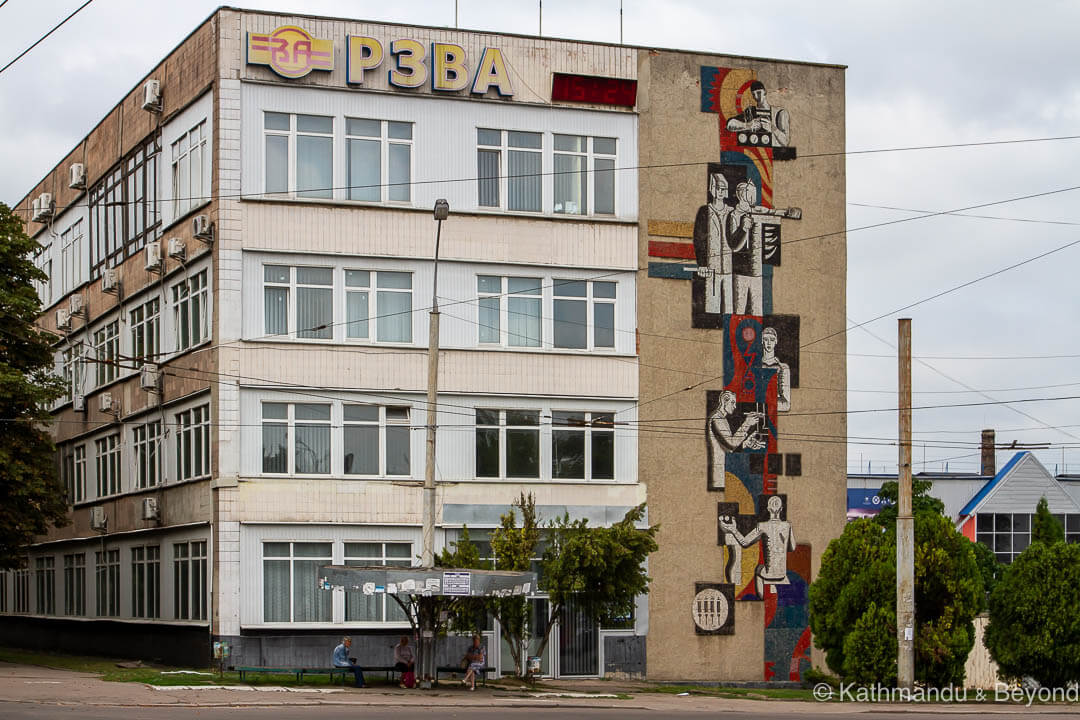
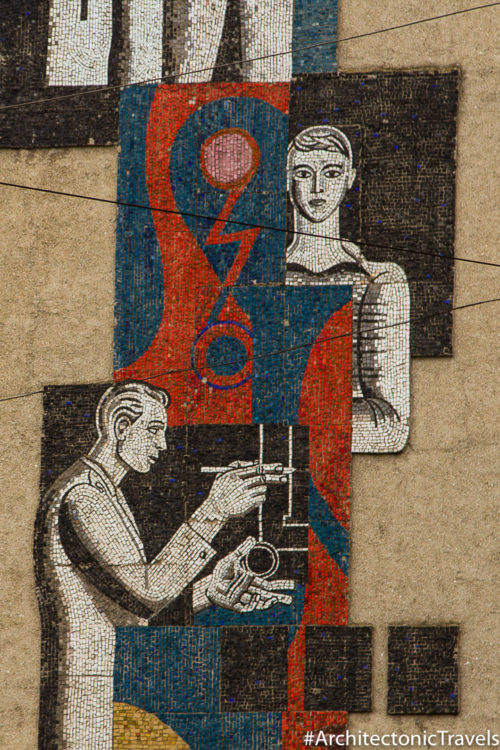
Soviet mosaics are beautiful, recently I have seen decorations with it, because I love interior design and I love to find something new always to put in my house, it’s great as seasons change and with them the styles of decoration, I read your post of the Mosaics at youth sports, I think it looks great.
Glad you enjoyed the post.
I wish someone could take on the project of finding funding to restore these beautiful mosaics. As a mosaic artist in Canada I know the work that goes into creating these and they should be treasured. I would even go so far as to help in the restoration of some of these if a project ever came about.
Hello Theodora, there is a handful of projects in the countries of the former Soviet Union that are working to preserve some of these mosaics but they are certainly in the minority I’m afraid. The organisations listed in the Other Resources section at the bottom of this post each organise restoration and preservation work. For example, Soviet Mosaics in Ukraine have a recent post on their Facebook page about the recent work they have been carrying out on a bus shelter. Here is the link in case you are interested in contacting them (https://www.facebook.com/soviet.mosaics.ua). Do you have a website displaying your work, I would be interested to see it if so?